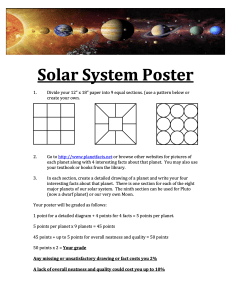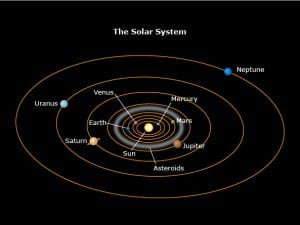Lesson Plans: January 22nd – 26th
Lesson Plans: January 15th – 19th
Monday – Martin Luther King Jr. Day
Tuesday & Wednesday – Snow Days
Thursday – We will look at the four outer planets, also known as the Jovian planets and the gas giants. They are much larger than the four inner planets. These outer planets are far from the sun, so they are generally cold planets with very long years. None of the planets have a solid surface, hence the term “gas giants.” They are Jupiter, Saturn, Uranus, and Neptune.
Friday -We will discuss non-planetary objects that inhabit our solar system such as asteroids, comets, and meteoroids.
Lesson Plans: January 9th – 12th
Tuesday – Welcome back from Winter Break Activity!
Wednesday – We will begin discussing our new unit, Organization of the Solar System, starting with the theories on the formation of the solar system.
Thursday & Friday – We will take an in-depth look at the 4 inner planets of our solar system that are closest to the sun; Mercury, Venus, Earth, and Mars. These planets are also known as the “terrestrial” planets because they are made mostly of liquid and solid rock. We will also discuss some similar characteristics they share, as well as the many distinct differences.


